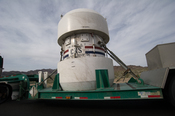good good
Nuclear Waste management
Nuclear energy harnesses the energy released during the splitting or fusing of atomic nuclei. This heat energy is most often used to convert water to steam, turning turbines, and generating electricity.
However, nuclear energy also has many disadvantages. An event that demonstrated this was the terrible incident at Chernobyl'. Here on April 26, 1986, one of the reactors of a nuclear power plant went out of control and caused the world's worst known reactor disaster to date. An experiment that was not properly supervised was conducted with the water-cooling system turned off. This led to the uncontrolled reaction, which in turn caused a steam explosion. The reactor's protective covering was blown off, and approximately 100 million curies of radionuclides were released into the atmosphere. Some of the radiation spread across northern Europe and into Great Britain. Soviet statements indicated that 31 people died because of the accident, but the number of radiation-caused deaths is still unknown.
The same deadly radiation that was present in this explosion is also present in spent fuels. This presents special problems in the handling, storage, and disposal of the depleted uranium. When nuclear fuel is first loaded into a reactor, 238U and 235U are present. When in the reactor, the 235U is gradually depleted and gives rise to fission products, generally, cesium (137Cs) and strontium (90Sr). These waste materials are very unstable and have to undergo radioactive disintegration before they can be transformed into stable isotopes. Each radioactive isotope in this waste material decays at its characteristic rate. A half-life can be less than a second or can be thousands of years long. The isotopes also emit characteristic radiation: it can be electromagnetic (X-ray or gamma radiation) or it can consist of particles (alpha, beta, or neutron radiation).


